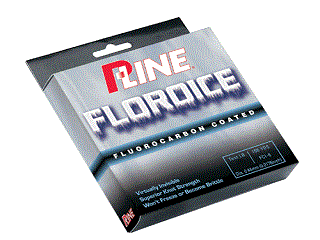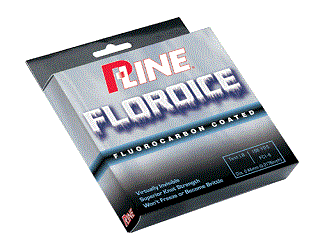 In the first part of my ice fishing series, I touched upon some of the elements of choosing a rod and reel for the ice this winter, and also mentioned a few products by well-known manufacturers. Today, my Ice Fishing Prep series continues with a look at a few of the line types that are commonly associated with the sport. Ice fishing has its own designated products, from rods to lures, and everything in between, and knowing how the different line types perform is beneficial, and sometimes crucial, on the ice.
In the first part of my ice fishing series, I touched upon some of the elements of choosing a rod and reel for the ice this winter, and also mentioned a few products by well-known manufacturers. Today, my Ice Fishing Prep series continues with a look at a few of the line types that are commonly associated with the sport. Ice fishing has its own designated products, from rods to lures, and everything in between, and knowing how the different line types perform is beneficial, and sometimes crucial, on the ice.
There are monofilament liens specifically designed for ice fishing. The Vicious brand, for example, produces such a line. Available in small spools, ice fishing mono lines are formulated to withstand the harsh conditions of winter. Monofilaments are available in varying strength, and some even come in as little as 2-pound test, which is great for lighter panfish presentations. I’ve heard of some thrifty anglers who have used nylon thread, commonly found in fabric stores and available for a dollar or so, as line for their ultralight setups. Like freshwater monofilament, ice mono comes in a few different colors, including bright orange and blue. And, like freshwater monofilament, anglers will swear by one color or the next.
If you want a little more strength and durability from your line, then superlines might be the way to go. Lines made of materials like Kevlar or Spectra are designed to be thin in diameter, while maintaining a superior strength. These lines are useful when ice fishing deeper waters. Like freshwater braid, they’re more visible in the water, which causes some anglers to hesitate to use them. However, you can implement a fluorocarbon leader and solve that problem easily.
While braided lines are usually avoided in winter, due to their tendency to freeze, ice fishing braid is designed to handle the cooler temperatures. In fact, some braided lines are coated in vinyl or Teflon, as well, in order to further strengthen such resistance to freezing conditions. Vinyl lines tend to have more memory, however, then their Teflon counterparts, so keep that in mind this season.
There are other line types that have varying uses for ice fishing, such as tip-ups and other rigging. Wire lines can be used for jigging in deep water, and also for leader material. Just be sure to watch out for kinks if you jig with wire line.
Outdoor retailers will most likely have a section devoted to ice fishing line this winter, and the associates will be able to answer any questions you may have. Often, ice anglers target a specific fish, and whether you’re looking to fill your cooler with bluegill or perch, or trying to pull a tournament-winning pike through the ice, knowing how the different lines work and matching their properties to your purposes is important.








